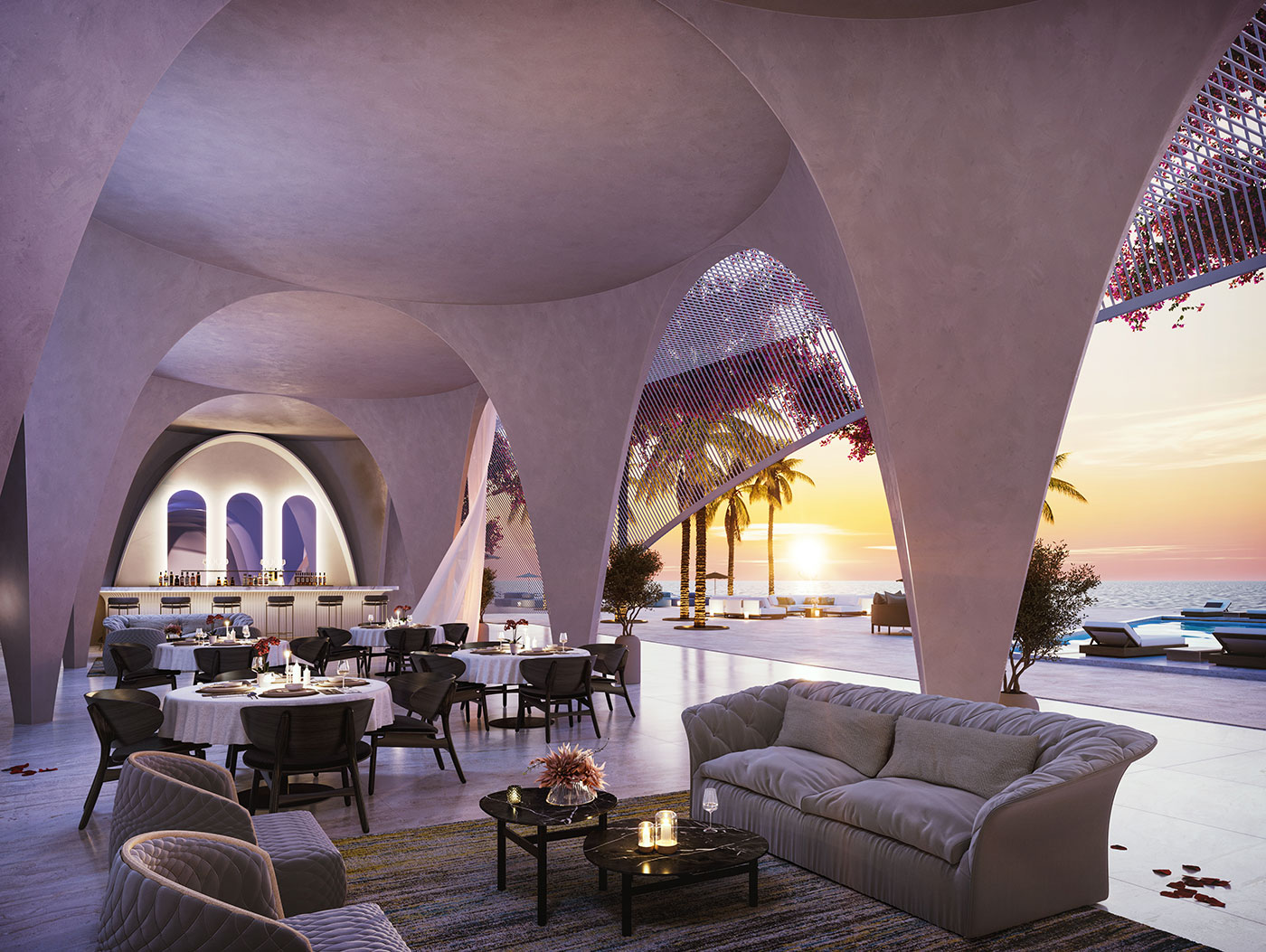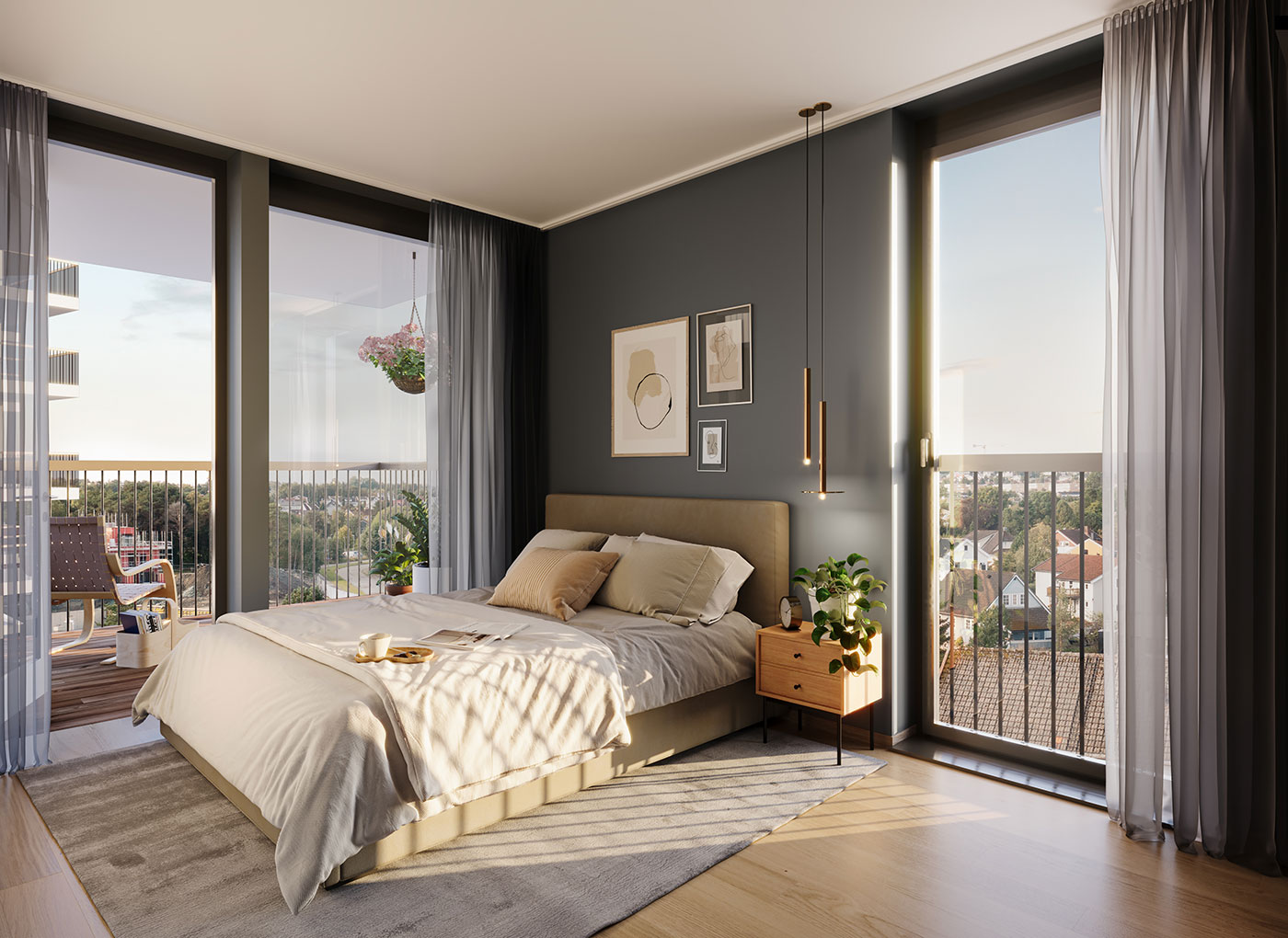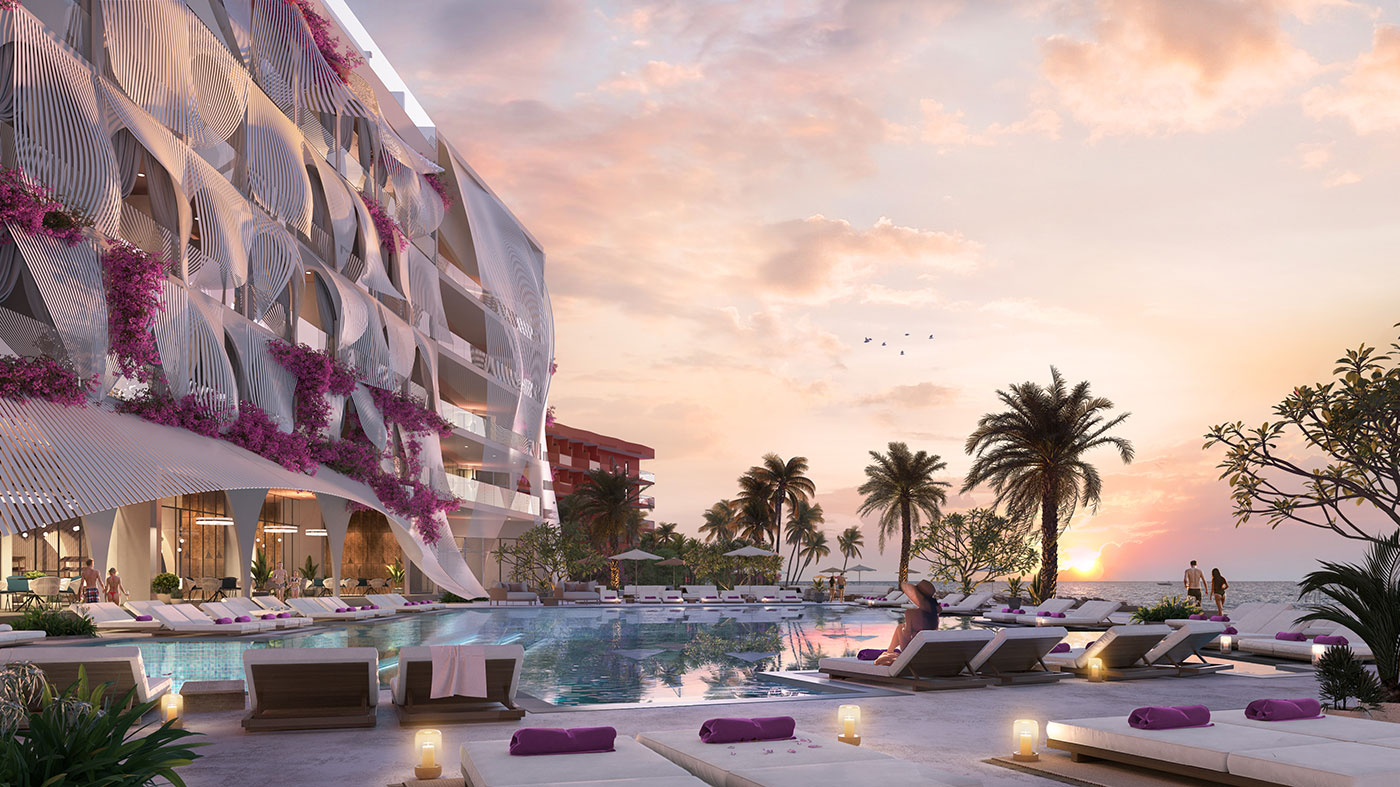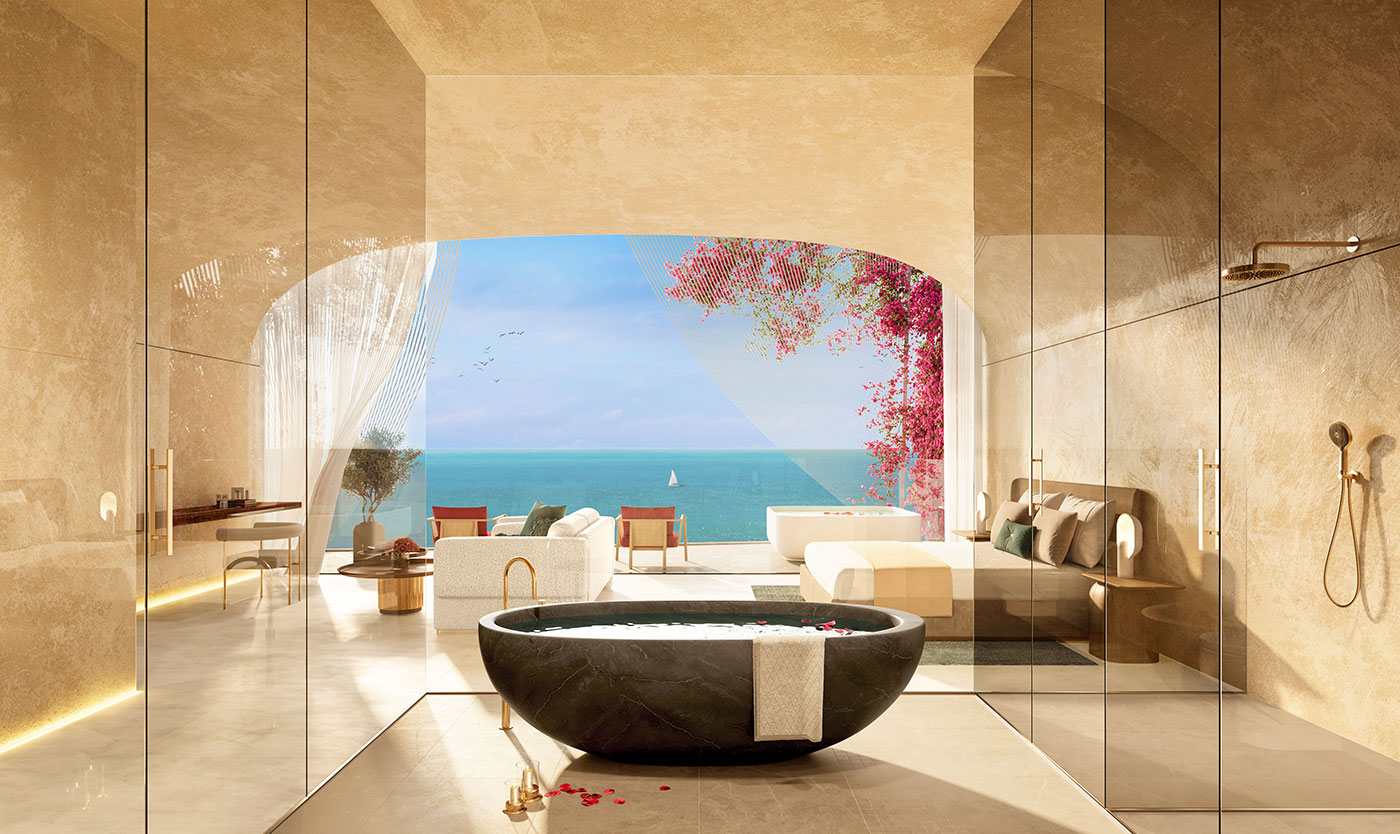Optimizing Lighting in Building Design: Key Considerations

Arqsix
August 26th, 2024

How you light a building transforms how it looks and feels. Proper lighting in building design affects moods, highlights features, and boosts functionality. This article will guide you through essential aspects of building lighting, from natural and artificial lighting to design strategies and energy efficiency.
Understanding the Role of Lighting in Building Design
 Created by Arqsix
Created by Arqsix
Lighting is the unsung hero of architectural design, wielding the power to transform spaces and evoke emotions. It’s not merely about illumination; it’s about creating experiences and enhancing the built environment. As one of the most important elements in architecture, light influences design, functionality, and moods, significantly impacting how we perceive and interact with spaces.
The way light is used, whether positive or negative, requires detailed planning to achieve the desired effects on the appearance and ambiance of a space. Proper lighting can:
Define volumes
Enhance colors
Create visual comfort
Make a room appear larger
Ultimately, lighting can greatly affect the well-being of occupants.
Natural Lighting
Natural lighting, or daylighting, is the oldest and most fundamental method of interior illumination. It involves designing spaces to harness as much natural light as possible, creating warm and inviting environments that significantly impact people’s psychological well-being. The strategic use of natural light can enhance comfort, regulate body clocks, and create tranquil atmospheres. Architects employ various techniques to maximize natural light, such as carefully positioning windows and using reflective surfaces like mirrors to amplify illumination and enhance the perceived size of spaces. In contrast to relying solely on natural or artificial light, the combination of both can provide a well-balanced and efficient lighting solution.
However, balancing the benefits of natural light with potential challenges, like glare and heat gain, necessitates thoughtful design elements. For instance, roof overhangs can shield windows from direct sunlight during summer months.
Artificial Lighting
While natural light sets the foundation, artificial lighting provides the versatility and control needed to create specific moods, improve functionality, and highlight architectural features. In commercial settings, where both visual appeal and functionality are of prime importance, appropriate artificial lighting becomes indispensable. Technological advancements have transformed artificial lighting into a key design element, offering a myriad of possibilities for architects and designers. Smart lighting systems and controls have become essential components in modern commercial LED lighting, allowing for dynamic adjustments and energy efficiency. Nevertheless, careful consideration of the positioning of artificial lighting is important. Poor placement can result in eye strain, disrupted sleeping patterns, and impaired cognitive functions.
The integration of artificial lighting in architecture requires a thoughtful approach, considering factors such as:
intensity
color
positioning
type
This is to create environments that are not only visually appealing but also conducive to well-being and productivity.
Types of Lighting in Buildings
 Created by Arqsix
Created by Arqsix
In the realm of architectural lighting design, understanding the different types of lighting is crucial for creating balanced and functional spaces. Lighting can be classified into three primary categories based on its intended use: general (ambient), accent, and task lighting. Each type serves a specific purpose and, when combined effectively, can transform both the aesthetic and functionality of a space.
In residential settings, layering these different types of lighting creates a versatile and inviting atmosphere, allowing for adjustments to suit various activities and moods throughout the day. For exterior spaces, specialized exterior lighting fixtures like floodlights illuminate work zones or outdoor playing fields, showcasing how lighting design extends beyond interior spaces to shape the entire built environment.
Task Lighting
Task lighting is of paramount importance in enhancing visibility and reducing eye strain for specific activities. This targeted form of illumination is essential for areas where detailed work is performed, such as reading nooks, kitchen countertops, or office desks. By providing focused light, task lighting helps illuminate workspaces, making it easier to see important details and reducing the risk of eye problems associated with poor lighting conditions.
Common examples of task lighting include:
Desk lamps
Swing arm lamps
Under-cabinet lights
Pendant lights strategically placed over work areas
In kitchen design, for instance, combining task lighting above work surfaces with ambient downlights and LED strips can significantly enhance both functionality and visual appeal, creating a space that is both practical and aesthetically pleasing.
Ambient Lighting
Often referred to as general lighting, ambient lighting creates a soft, uniform glow that gently permeates an entire space, avoiding glare. This type of lighting forms the foundation of a room’s lighting scheme, providing overall illumination and setting the tone for the entire space.
One effective technique for achieving ambient lighting is cove lighting, which casts a soft glow that highlights architectural features like crown molding while providing indirect illumination. Another popular method is uplighting, a form of indirect lighting that enhances a room by reducing ceiling dark spots and shadows, thereby creating a comfortable and inviting atmosphere.
By carefully planning ambient lighting, architects and designers can ensure that spaces feel welcoming and well-lit, providing a perfect backdrop for other lighting types to complement and enhance.
Accent Lighting
Serving as the artistic brush in the palette of architectural lighting design, accent lighting draws attention to specific features, thereby adding depth and visual interest to a space. This type of lighting is instrumental in highlighting items on display, such as artwork, architectural details, or prized possessions. By using focused light sources like spotlights or strategically placed table lamps, accent lighting can effectively draw the eye to key architectural features, creating focal points within a room.
This technique not only enhances the aesthetic appeal of a space but also adds layers of light that contribute to the overall ambiance. When combined with ambient and task lighting, accent lighting completes the trio of lighting types that, when balanced correctly, can transform an ordinary room into an extraordinary space, showcasing the true potential of thoughtful architectural lighting design.
The Impact of Light on Architectural Elements
 Created by Arqsix
Created by Arqsix
As a powerful tool in the architect’s arsenal, light can dramatically influence our perception and experience of built environments. The interplay between light and architectural elements can profoundly affect the emotional state of occupants, playing a crucial role in defining the atmosphere of a space. Light has the remarkable ability to:
Redefine a room by affecting visual comfort
Set tones
Highlight textures
Enhance colors
Moreover, the strategic use of light can alter our perception of shape and size within spaces; for instance, reflecting light off light-colored walls can make a small room appear more spacious. The interaction between light and architectural features is a delicate balance, with the potential to either enhance or diminish the visibility and prominence of these elements. Understanding this relationship is key to creating spaces that not only look impressive but also feel harmonious and inviting.
Reflective Surfaces
Playing a pivotal role in amplifying natural light, reflective surfaces create brighter and more dynamic environments within architectural spaces. By strategically incorporating light-colored surfaces around windows, designers can effectively reflect more light into a room, maximizing the benefits of natural illumination. Mirrors, in particular, are powerful tools in the architect’s arsenal, capable of making interiors appear larger and altering spatial boundaries, thus transforming perceptions of space.
The use of reflective materials such as polished metals or mirrored surfaces not only enhances lighting effects but also contributes to visual depth, adding layers of interest to architectural designs. In more avant-garde applications, high-gloss polished steel on building facades can create distorted reflections, modernizing traditional architectural aesthetics, while mirrored envelopes on buildings can break and recreate surrounding landscapes, adding dynamic visual effects that blur the lines between structure and environment.
Color Temperature
A crucial aspect of lighting design, color temperature significantly influences the atmosphere and perception of a space. In the lighting industry, Correlated Color Temperature (CCT) and Color Rendering Index (CRI) are primary metrics used to define the color properties of light sources. CCT measures the warmth or coolness of light, directly impacting the ambiance of an environment.
Warmer color temperatures, typically around 2700K to 3000K, create a cozy and inviting atmosphere, making them ideal for residential and hospitality settings. In contrast, cooler color temperatures above 4000K are often employed in commercial and office spaces to promote alertness and focus. For versatile environments like bedrooms, the use of dimmable LEDs and layered lighting schemes allows for dynamic adjustments, enabling the creation of relaxing and intimate moods as needed.
Advanced LED technology, with programmable drivers, offers the exciting possibility of dynamic color displays and subtle shifts in color temperature, providing unprecedented control over the lighting atmosphere in architectural spaces.
Luminous Intensity
A key concept in lighting design, luminous intensity measures the wavelength-weighted power emitted by a light source in a particular direction per unit solid angle. This metric is crucial in determining how bright a light source appears from a specific vantage point, playing a vital role in shaping the visual experience of a space. Measured in candelas (cd), luminous intensity helps designers assess and control the amount of light emitted in various directions, allowing for precise manipulation of lighting effects within architectural environments.
Achieving the desired lighting outcomes in a space requires careful planning of luminous intensity to meet specific brightness levels and visual needs. By mastering the control of luminous intensity, architects and lighting designers can create environments that not only meet functional requirements but also enhance the aesthetic appeal and emotional impact of spaces, ensuring optimal visual comfort and engagement for occupants.
Energy Efficiency in Lighting Design
 Created by Arqsix
Created by Arqsix
In the contemporary landscape of architectural lighting design, energy efficiency has become a paramount consideration, driven by both environmental concerns and economic factors. LED lighting has emerged as the predominant light source in architecture and interior design, offering highly energy-efficient solutions that significantly reduce power consumption and operational costs. These advanced lighting systems not only contribute to energy conservation but also play a crucial role in the current wave of green construction and sustainability initiatives.
Beyond the choice of light sources, the integration of smart lighting solutions can further enhance energy efficiency. Some examples include:
● Brightness control systems
● Advanced lighting control systems
● Minimizing light loss
● Optimizing usage based on occupancy, time schedules, and natural light availability
As the industry continues to evolve, there’s an increasing focus on reducing both embodied and operational carbon in lighting design, with principles like the Circular Economy guiding more sustainable practices.
LED Lighting
Revolutionizing the architectural lighting landscape, LED lighting offers a compelling combination of energy efficiency, longevity, and versatility. The high efficiency of led light significantly lowers the Total Cost of Ownership (TCO) by dramatically reducing energy consumption compared to traditional lighting solutions. With lifetimes extending up to an impressive 100,000 hours, LED lights not only minimize replacement frequency but also substantially cut down on maintenance costs, making them an economically sound choice for long-term lighting solutions.
Beyond their practical benefits, light emitting diodes (LEDs) provide designers with an expansive creative palette, offering a broad color range that allows for dynamic and instantaneous color changes. This programmability supports complex, automated lighting adjustments and intricate color displays, enabling architects and designers to create responsive, adaptive lighting environments that can transform spaces at the touch of a button.
Daylighting Strategies
Playing a pivotal role in reducing reliance on artificial light, daylighting strategies enhance both energy efficiency and indoor environmental quality. In commercial buildings, these strategies often work in tandem with natural ventilation techniques to create low-energy and cost-effective environments that prioritize occupant comfort and well-being. The effectiveness of daylighting is intricately linked to the orientation of windows relative to the sun’s path, requiring careful planning and design consideration to maximize natural light penetration throughout the day and across seasons.
Complementing these strategies, the strategic use of reflective surfaces within interior spaces can significantly minimize the need for artificial lighting during daylight hours, further contributing to energy efficiency goals. By thoughtfully integrating these daylighting principles, architects can create spaces that not only reduce energy consumption but also provide a more natural, pleasant environment for occupants, enhancing productivity and well-being.
Lighting Control Systems
Representing the cutting edge of energy-efficient lighting design, lighting control systems offer sophisticated solutions that optimize light usage by providing illumination only when and where it is needed. These systems leverage advanced technologies to reduce energy consumption and operational costs while enhancing the functionality and flexibility of lighting in architectural spaces.
A key component of many modern lighting control systems is occupancy sensors, which automatically activate lighting in response to human presence and deactivate it when areas are unoccupied. This smart approach to lighting management offers several benefits:
● Conserves energy
● Reduces electricity costs
● Increases the lifespan of light bulbs
● Enhances the overall sustainability of buildings
Additionally, lighting control systems can integrate with other building management systems, allowing for comprehensive energy management strategies that adapt to changing environmental conditions and occupancy patterns throughout the day. By providing precise control over lighting intensity, color temperature, and distribution, these systems enable architects and facility managers to create dynamic, responsive lighting environments that meet both aesthetic and functional requirements while minimizing energy waste.
Practical Tips for Integrating Lighting into Building Design
 Created by Arqsix
Created by Arqsix
Effectively integrating lighting into building design necessitates a multifaceted approach that balances aesthetic considerations, functional requirements, and energy efficiency goals. Successful lighting strategies often involve layering different types of lighting – ambient, task, and accent – to create a versatile and balanced lighting scheme that can adapt to various needs and activities.
Incorporating task-specific lighting not only enhances functionality but also contributes to the overall ambiance of a space, allowing for focused illumination where it’s most needed while maintaining a cohesive design aesthetic. It’s crucial to consider both the practical and aesthetic aspects of lighting from the early stages of the design process, ensuring that lighting solutions not only meet the functional needs of occupants but also enhance the architectural vision.
Key strategies for integrating lighting into architecture include:
The strategic use of glass and windows to maximize natural light
Combining light with reflective surfaces to amplify illumination
Channeling light through structural elements to create dynamic lighting effects
By thoughtfully applying these principles, architects can create spaces that are not only well-lit but also visually striking and energetically efficient.
Using Glass and Windows
Increasingly popular in architectural design, the strategic use of glass and windows maximizes natural light and enhances the overall energy efficiency and visual appeal of buildings. Some key considerations for the effective integration of glass and windows include:
Positioning windows and skylights to capture maximum daylight
Minimizing glare and heat gain through the use of shading devices or coatings
Choosing energy-efficient glass and window frames
Incorporating daylighting controls to optimize natural light levels
By carefully considering these factors, architects can create spaces that are filled with natural light, comfortable, and energy-efficient.
Skylights, in particular, offer an excellent solution for bringing natural light into central areas of buildings that might otherwise remain dark, transforming interior spaces with soft, diffused illumination. Clerestory windows, characterized by their high, vertical placement, are another valuable tool in the architect’s arsenal, enhancing daylight penetration into deeper spaces and creating interesting plays of light and shadow throughout the day.
By thoughtfully incorporating these glazing elements, architects can create dynamic, light-filled spaces that not only reduce the need for artificial lighting but also foster a stronger connection between indoor environments and the natural world outside.
Combining Light with Reflective Surfaces
A powerful technique in architectural lighting design, the strategic combination of light with reflective surfaces can dramatically enhance the illumination and perceived spaciousness of interiors. Reflective surfaces, such as mirrors or light shelves, can be ingeniously employed to redirect light deeper into interior spaces, effectively extending the reach of both natural and artificial light sources. This approach not only maximizes the utility of available light but also contributes to energy efficiency by reducing the need for additional artificial lighting.
The use of light-colored walls and ceilings plays a crucial role in this strategy, as these surfaces enhance the overall brightness of a space by reflecting more light throughout the room. The interplay between light and reflective elements creates dynamic and well-lit environments, transforming potentially dark or confined areas into bright, inviting spaces. By carefully considering the placement and type of reflective surfaces, architects can sculpt light within a building, creating visual interest, enhancing spatial depth, and optimizing the distribution of light to meet both aesthetic and functional needs.
Channeling Light Through Structures
An innovative approach to distributing natural light throughout buildings, channeling light through architectural structures is particularly useful in areas that might otherwise lack direct access to daylight. Atriums serve as exemplary features in this regard, acting as central light wells that can distribute natural light across multiple floors, creating a sense of openness and connection between different levels of a building.
Creative architectural solutions, such as the narrow vertical windows stretching to the ceiling in London’s Tate Modern Museum, demonstrate how carefully designed openings can cast long strips of light beams, providing even illumination throughout expansive spaces. In more intimate settings, like the Church of the Light in Osaka, Japan, the strategic use of voids carved out of concrete introduces sunlight in a highly controlled manner, shaping it into illuminating forms that enhance the spiritual atmosphere of the space.
For areas without direct access to exterior walls or roofs, light tubes and light pipes offer practical solutions to channel natural light from the roof into interior spaces, bringing the benefits of daylight to otherwise windowless areas. These techniques, combined with the versatility of LED lighting systems, enable architects and designers to create dynamic, responsive lighting environments that can adapt to changing needs and preferences throughout the day.
Case Studies of Successful Lighting in Architecture
Valuable insights into the practical application of lighting design principles across various building types can be gained by examining case studies of successful lighting in architecture. These real-world examples showcase how thoughtful lighting design can significantly enhance the user experience, improve safety, and elevate the aesthetic appeal of architectural spaces.
In public spaces, lighting plays a crucial role in creating visually stimulating environments while ensuring a sense of safety and accessibility for a diverse range of users. Iconic projects like the Thermal Baths in Vals demonstrate the power of natural light in creating dramatic contrasts between light and shadow, enhancing the sensory experience of the space. Similarly, the Royal Mosque in Isfahan showcases how varying sizes of arches in the prayer hall create layers of light that transition from bright to dim, contributing to a sense of mystery and calm that enhances the spiritual atmosphere.
In educational settings, such as the Exeter Library in New Hampshire, the integration of independent lighting sources for individual study areas creates a comfortable and relaxing environment conducive to learning and concentration. These case studies illustrate how lighting can be masterfully integrated into architectural design to create spaces that are not only functional but also emotionally resonant and visually captivating.
Residential Spaces
The focus in residential interior lighting design shifts to creating comfortable, warm, and well-lit living spaces that cater to the diverse needs of daily life. The living room, often the heart of the home, benefits from a combination of warm ambient lighting and decorative pendant lights to create a welcoming and sophisticated atmosphere that can adapt to various activities, from casual relaxation to entertaining guests.
Modern bedroom designs are embracing the versatility of LED lighting, combining downlights with perimeter LED strips to achieve a gentle and ambient light environment that promotes relaxation and supports a healthy sleep cycle. In luxurious bathroom designs, a layered lighting approach incorporating pendants or chandeliers, downlights, and mirror lights achieves both functionality and glamour, transforming everyday routines into spa-like experiences.
These residential lighting strategies demonstrate how thoughtful lighting design can enhance the quality of life at home, creating spaces that are not only visually appealing but also supportive of well-being and comfort.
Commercial Buildings
Playing a pivotal role in creating environments that are functional, efficient, aesthetically pleasing, and conducive to productivity, lighting design is crucial in commercial buildings. The goal in commercial lighting projects is to seamlessly integrate lighting design with the building’s architecture, enhancing both functionality and visual appeal. This integration requires a deep understanding of how light interacts with architectural elements and how it can be used to define spaces, guide movement, and create atmosphere.
An exemplary case of innovative lighting design in commercial architecture is the Jewish Museum in Berlin, where unique, unsymmetrical strips of windows based on lines drawn to link representative figures of Judaism create dynamic lighting patterns inside the building. This approach not only serves a functional purpose but also adds a layer of symbolic meaning to the space, demonstrating how lighting can be used to tell a story and evoke emotions in commercial and cultural buildings. Such examples highlight the importance of considering lighting as an integral part of the architectural design process, capable of transforming ordinary spaces into extraordinary experiences.
Public Spaces
Playing a crucial role in enhancing legibility, accessibility, and overall user experience, lighting design in public spaces makes these areas more enjoyable and functional for a wide range of users. In these communal environments, lighting serves not just an aesthetic purpose but is fundamental to safety and navigation, often highlighting pathways and important landmarks to guide visitors and create a sense of security, especially after dark.
Street lighting, for instance, is essential in illuminating roadways and walkways at night, ensuring safe passage for both pedestrians and vehicles. Successful public space lighting projects often emerge from collaborative efforts involving a diverse team of designers, including architects, artists, and curators, each bringing their unique perspective to create holistic lighting solutions that address both practical needs and artistic vision. This multidisciplinary approach allows for the creation of public spaces that are not only well-lit and safe but also visually striking and engaging, encouraging community interaction and enhancing the overall urban experience.
Summary
As we’ve journeyed through the multifaceted world of architectural lighting design, it’s clear that light is far more than just a functional necessity—it’s a powerful tool that shapes our perception, emotions, and experiences within built environments. From the strategic use of natural light to the innovative application of LED technology, lighting design has the potential to transform spaces, enhance well-being, and significantly impact energy efficiency. The interplay between light and architectural elements, the careful consideration of color temperature and luminous intensity, and the integration of smart lighting control systems all contribute to creating spaces that are not only visually stunning but also comfortable, functional, and sustainable. As we look to the future of architectural design, the importance of thoughtful lighting strategies cannot be overstated. Whether in residential, commercial, or public spaces, the right lighting approach can elevate a design from ordinary to extraordinary, creating environments that inspire, comfort, and delight. Let this exploration of lighting in building design inspire you to see the built environment in a new light, recognizing the profound impact that thoughtful illumination can have on our daily lives and the spaces we inhabit.
FAQs
Our location
Ready to share your expertise?
We welcome submissions from talented writers and experts in various fields who are passionate about sharing their knowledge and insights with our audience.
Write for UsArqsix - Shaping Stories, Shaping Spaces
Elevating real estate marketing for a world that’s always evolving.
2025 © Arqsix. All Rights reserved. |Sitemap|Privacy Notice